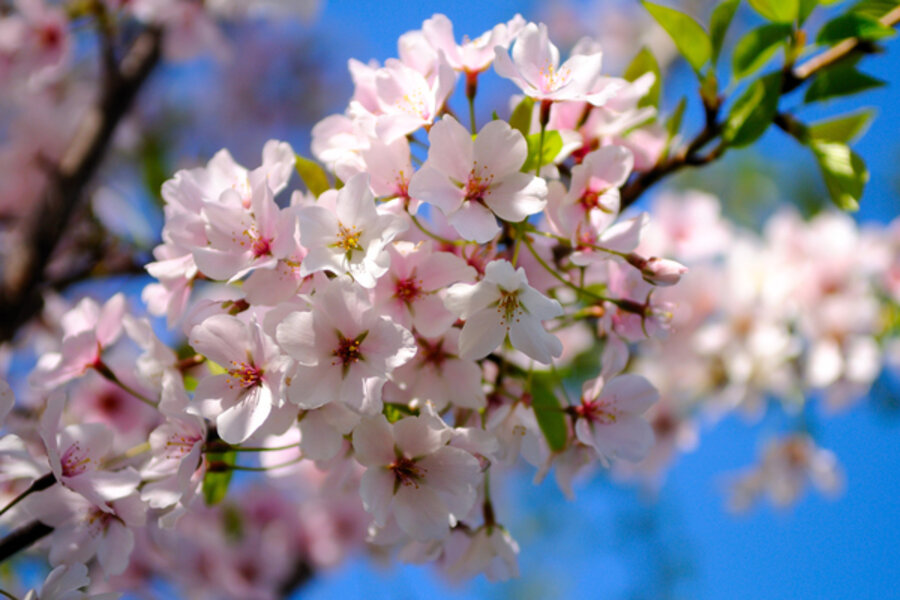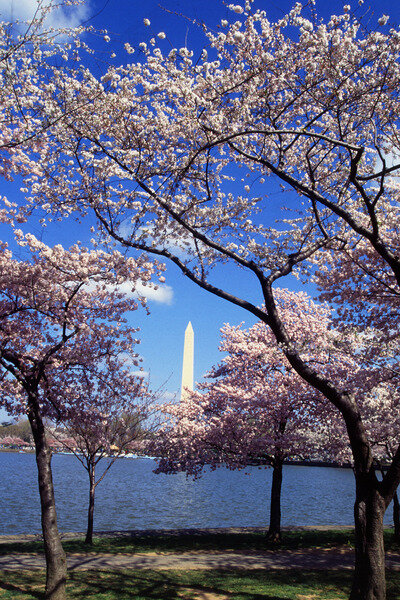It's cherry blossom time in Washington and beyond
Loading...
Pink isn’t my favorite color, but photos of past National Cherry Blossom Festivals in Washington, D.C., are enough to make me start shopping for Japanese cherry trees.
The annual festival in Washington — this year’s peak viewing dates are projected to be March 29 to April 3 — is the granddaddy of American cherry blossom festivals.
It celebrates the 1912 gift [PDF] of 3,020 Japanese cherry trees from the city of Tokyo to the city of Washington. There have been many trees added since then, including 500 saplings in 1999 that were propagated from cuttings taken from the original 1912 trees. (About 100 of the original Yoshino trees, which have a life expectancy of 47 years, still survive.)
Supporting Japan
Even though the festival doesn't officially open until Saturday, today there will be a Stand With Japan walk around the Tidal Basin to benefit the Japan Earthquake and Pacific Tsunami fund.
If you can’t make it to Washington, it’s possible to attend a cherry blossom festival closer to home. There are events in:
California (inlcudes a Red Cross fundraiser for Japan aid)
Ohio [PDF], and elsewhere.
Some are larger than others, but these aren’t small-potatoes affairs: Macon, Ga., for example, spotlights more than 300,000 Yoshino cherry trees.
There also are festivals in Canada, England, China, Australia — and, of course, in Japan, where cherry-blossom viewing, called doing hanami, is practically a national sport. In addition to admiring the blossoms, hanami involves includes strolling and picnicking under the trees. There are dozens of festivals throughout the country, many with their trees illuminated at night.
In light of the awful events that have taken place recently in Japan, this isn’t the year to travel there. But Japan will recover, and its cherry trees will survive, more beautiful than ever.
Cherry trees for cold climates
Even the most hardy of those spectacular ornamental cherries are iffy in my windy, cold location, but if I want to window shop online I can look at the wonderful cherries growing at the Brooklyn Botanic Garden. (The BBG holds its own hanami celebration each year.)
For gardeners with suitable conditions — USDA Zones 5 to 8 — an ornamental cherry is boon to any landscape. And you can plant a Yoshino tree while supporting the National Cherry Blossom Festival at the same time if you can purchase it from the Arbor Day Foundation, which gives a portion of the proceeds to the festival.
As for cold-climate gardeners like me, we’re left to grow some of the edible Prunus cultivars — less spectacular blooms, more spectacular fruit — and chokecherries [PDF], pin cherries, sand cherries, and Amur cherries, which have less spectacular blooms and less spectacular fruit.
They’re fine landscaping plants, appreciated by wildlife, but have no eye-popping pink blossoms in spring.
Editor's Note: For more on cherry blossoms, see:
The Monitor's Cherry Blossoms photo gallery
Peter Grier's blog post, Cherry Blossom Festival 2011: a time to reflect on Japan
-----
Karan Davis Cutler blogs regularly at Diggin’ It. To read more, click here. She's a former magazine editor and newspaper columnist and the author of scores of garden articles and more than a dozen books, including “Burpee - The Complete Flower Gardener” and “Herb Gardening for Dummies.” Karan now struggles to garden in the unyieldingly dense clay of Addison County, Vt., on the shore of Lake Champlain, where she is working on a book about gardening to attract birds and other wildlife.






